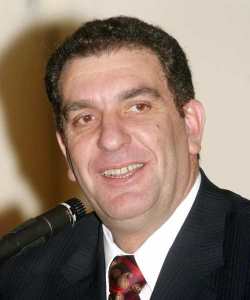You are here
Cord Blood Insurance: Peace of mind for families in need
![]()
When a child is in need of a stem cell transplant, it is usually because he or she is suffering from a serious illness, which impacts the entire family. Medical insurance policies may fail to cover treatments of this kind, since medical technology is developing faster than legislative approvals and insurance policy coverage.
Preservation of cord blood in a family bank serves as a “biological insurance policy” of sorts, but who funds the hospitalization for transplant, who pays the medical team, who compensates the family for the loss of work time and the additional expenses that weigh heavily on them?
A one-of-a-kind stem cell insurance policy
Based on his experience as an insurance agent, Mr. Amnon Pelz thought it prudent to combine the family’s banked cord blood unit - the biological insurance - with a financial insurance policy that would cover the costs of using the unit for transplant.
 At Taburit family cord blood bank in Israel, every client family is automatically enrolled under a cord blood insurance plan. Mr. Pelz developed this plan over a decade ago, and the underwriter of this cord blood insurance is Lloyd’s of London. It is the world's first cord blood insurance policy and the only one that has already paid insurance claims for the use of umbilical cord blood.
At Taburit family cord blood bank in Israel, every client family is automatically enrolled under a cord blood insurance plan. Mr. Pelz developed this plan over a decade ago, and the underwriter of this cord blood insurance is Lloyd’s of London. It is the world's first cord blood insurance policy and the only one that has already paid insurance claims for the use of umbilical cord blood.
What does the policy include?
The Cord Blood Insurance by Lloyd's of London covers all the costs involved in using the cord blood unit for indications where stem cell transplants are the standard of care. The covered expenses include:
- Transplantation or Transfusion of stem cells harvested from the insured person or from an anonymous donor.
- The medical procedure involved in the transplantation of stem cells, including hospitalization and medicines.
- Compensation payout if the transplant is financed by another party.
- A monthly allowance for the 12 month period following the stem cell transplantation.
- Locating and obtaining an alternative stem cell unit, if the cord blood unit preserved at birth is unsuitable for the treatment.
- The insurance coverage can be expanded to include the entire family for an additional charge.
- The insurance coverage an also be expanded to cover Cerebral Palsy treatment for an additional charge.
Testimonials for Cord Blood Insurance by Lloyd's of London
The cord blood insurance policy has been activated a number of times, when children have needed stem cell transplants following a serious illness. These are two examples:
In May 2010, at the age of 4 months, Baby A. was diagnosed with Omenn Syndrome, a severe immunodeficiency disease. Children suffering from this rare genetic defect are called “bubble babies” - they are susceptible to all infections and are forced to live in strict and absolute isolation once the disease is detected. In order to survive, they are in urgent need of a stem cell transplant.
Ron, Baby A’s father, wrote the following in a thank you letter: “At that moment, when we were given the news about the need for an expensive medical procedure, the economic protection provided by the insurance was very meaningful. In my personal case, the insurance company paid us a sum of money that helped a great deal in the rehabilitation process following a period that was difficult both mentally and financially.”
In 2016, at the age of 10 months, Baby L. was diagnosed with a malignant rhabdoid tumor of the kidney. Her cord blood was stored at Taburit and it was reinfused into her body on her first birthday as part of a stem cell transplant. The transplant and hospitalization were covered by the Health Basket under the laws of the State of Israel; hence, the family received a one-time compensation payout of NIS 56,000 and a monthly recovery allowance of NIS 1,500 for the 12 month period following the transplant. The funds received by the family greatly contributed to financing the costs of treatment, babysitters, loss of work time, etc.
As Mr. Amnon Pelz says: “It's a very powerful and humbling feeling to know that you can help a family in need on more than one level".
